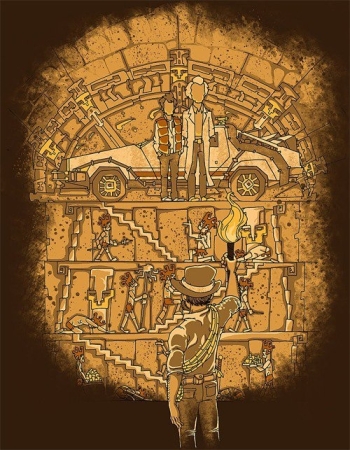This post contains affiliate links that help this blog continue to be awesome.
In most memorable books you read, the characters hold distinct places in your memory. Why is this? Outside of the overarching plot, what makes characters stand out in our minds? Character tags help with this immensely. A character tag is a physical way of being that the character comes back to time and again. Character tags could be:
- A common phrase or verbal tic
- A way of speaking
- An accent or dialect
- A physical mannerism
- A way of carrying themselves
- A scent
- A recurring behavior
- Etc.
For example, in Madeleine L’Engle’s A Wrinkle in Time, 6-year-old Charles Wallace speaks incredibly clearly and calmly and in complete sentences, much more so than the average person. As a result, even when dialogue tags are scarce, we know when Charles Wallace is speaking. This also works well because of the contrast it provides to the other main characters. He works as a foil for his impulsive, belligerent sister Meg. L’Engle weaves these characters masterfully in a way that helps us relate to both of them.
In Rachel Ward’s Numbers, teenage Spider presents a fantastic example. Spider moves constantly, restless, and this comes up again and again. Our narrator Jem describes him as
“He’s big, Spider, tall. One of those people who stand too close to you, doesn’t know when to back off. Suppose that’s why he gets into fights at school. He’s in your face all the time, you can smell him. Even if you twist and turn away, he’s still there – doesn’t read the signs at all, never takes the hint.”
This becomes a character tag rather than just a description because we see Spider doing these things over and over again. These mannerisms embed themselves into the story. You also definitely want to walk the thin line of not using the character tags too much, or you can fall into the accidental comedy category.
Character tags become especially important in ensemble series like Harry Potter or Game of Thrones. In the Harry Potter series, even though Ernie MacMillan only pops up a couple times in each book, we know who he is because of the proud way he carries himself. It’s his primary character tag. In the Song of Ice and Fire series (Game of Thrones), keeping the crazy amount of characters straight is only possible because George RR Martin can throw down character tags like no one’s business. Ned Stark (not to mention many of the other Northerners in the series) is always saying “Winter is coming” like a mantra. If someone utters that phrase, we know we’re talking to Stark or one of his people.
What do these character tags do?
- They make characters more memorable and distinguishable (making the story more interesting).
- They tell us something about the character.
- They make the character more real for the reader.
- They help create tension between characters.
What are good character tags you’ve run across? What do you think character tags do for a story?
Related Links:
- Fiction Writer’s Connection: Tags for Secondary Characters
- Daily Writing Tips: Character Tags in Fiction
- Mary Gray: Character Development Exercises
- Description that Jumps Off the Page


